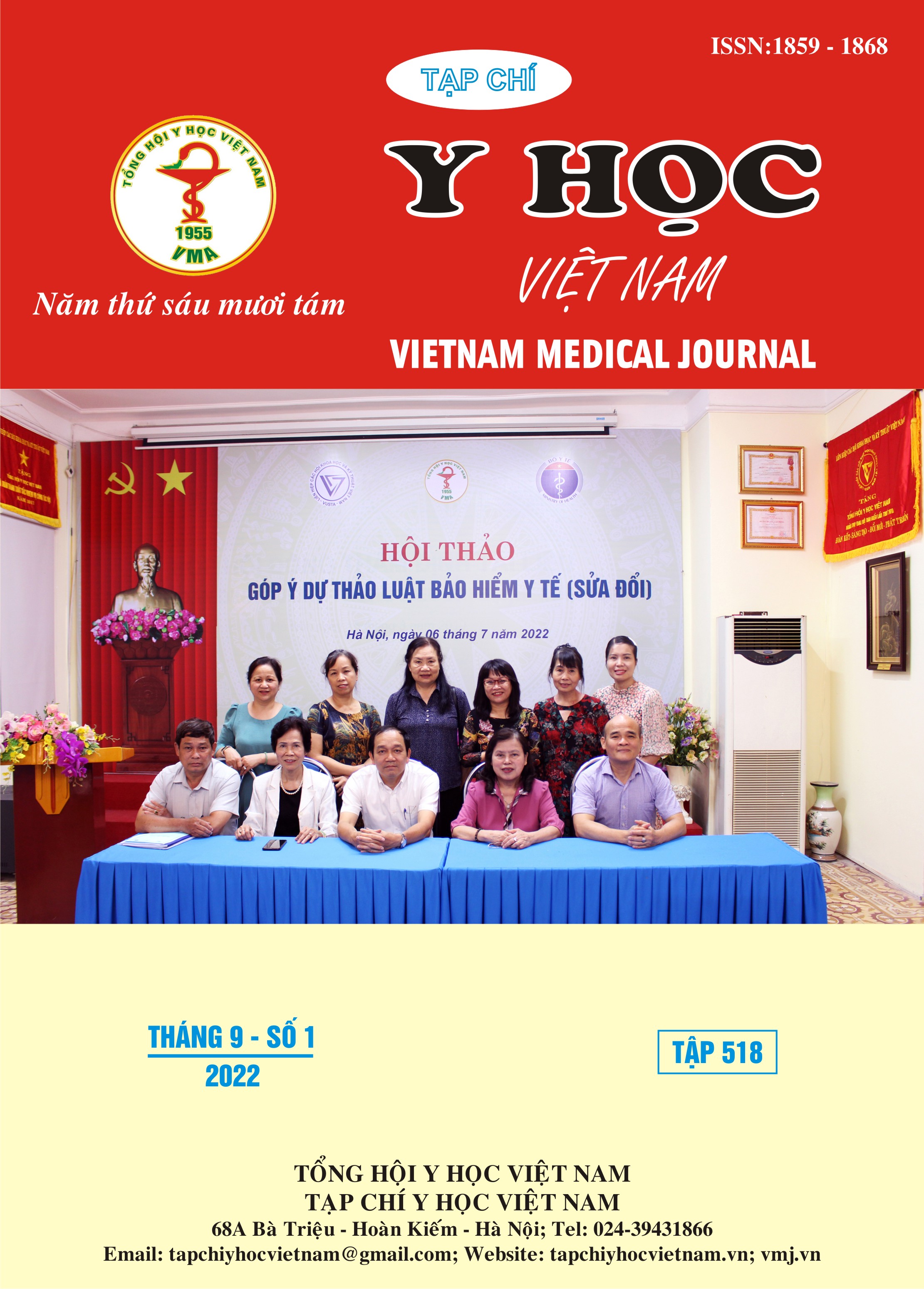AXILLARY ARCH AND CORRELATION WITH ARMPIT AREA LYMPH NODE DISTRIBUTION IN BREAST CANCER PATIENTS AT K HOSPITAL
Main Article Content
Abstract
Objectives: To describe the frequency and morphology of axillary arch and its correlation with the distribution of axillary lymph nodes in breast cancer patients at K hospital. Method: Cross-sectional description in five months from November 2021 to April 2022. Study on the axillary cavity of 260 patients undertaking surgery for breast cancer. Research information is obtained directly from conducting clinical examination, surgery, patient evaluation and information collected by form. Results: The frequency of encountering axillary arch in the study was 11.9%. The detection rate of lymph nodes covered by the axillary arch was 96.8%, of which 28 cases were detected with 1 lymph node (93.3%), 2 cases were detected with 2 nodes (6.7%) and 1 case was not detected with lymph nodes covering (3.2%). There were 13 cases of axillary arcectomy for lymph node dissection (41.9%) and 18 cases without axillary arcectomy for lymph node dissection (58.1%). In terms of axillary arch morphology, 100% of axillary arches were found to be in the muscular form of which 29 cases were muscle type including one muscle band without Lpa (93.5%) and 2 cases were muscle type with Lpa (6.5%). We did not record any axillary arch in the form of tendons during the study. Conclusion: Axillary arch is an important anatomical variation of the axillary region with a capture frequency of 11.9% in the study. Regarding the lymph nodes being covered by the axillary arch, the rate is 96.8%. There are no specific recommendations for resection or preservation of the axillary arch. Axillary arch morphology encountered clinically is in the form of muscle bundles.
Article Details
Keywords
Axillary arch, axillary lymph nodes, axillary lymph node dissection in breast cancer
References
2. Ramsay A. Account of Unusual Conformations of Some Muscles and Vessels. Edinb Med Surg J. 1812;8(31):281-283.
3. Loukas M, Noordeh N, Tubbs RS, Jordan R. Variation of the axillary arch muscle with multiple insertions. Singapore Med J. 2009;50(2):e88-90.
4. Kalaycioglu A, Gümüsalan Y, Ozan H. Anomalous insertional slip of latissimus dorsi muscle: arcus axillaris. Surg Radiol Anat SRA. 1998;20(1):73-75. doi:10.1007/BF01628121
5. Wagenseil F. Muskelbefunde bei Chinesen. 4 Sonderheft (Verhandlungen der Gesellschaft für physische Anthropologie, Band 2). Anthropol Anz. 1927: 42 - 51.
6. Testut L (1849 1925) A du texte. Les Anomalies musculaires chez l’homme expliquées par l’anatomie comparée, leur importance en anthropologie, par le Dr L. Testut,... Précédé d’une préface par M. le professeur Mathias Duval.; 1884. Accessed July 27, 2022. https://gallica.bnf.fr/ ark:/12148/bpt6k6230258d
7. Bonilla Sepúlveda ÓA. Arco axilar de Langer: serie de casos y revisión de la literatura. Rev Colomb Cir. 2021;36(2):268-274. doi:10.30944/ 20117582.646
8. Takafuji T, Igarashi J, Kanbayashi T, et al. [The muscular arch of the axilla and its nerve supply in Japanese adults]. Kaibogaku Zasshi. 1991;66(6):511-523.


